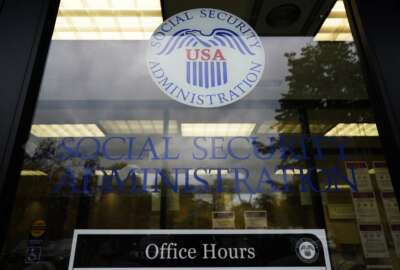Analysis: Change the role of the Postal Service to keep it viable
A recent GAO report highlighted the many budgetary problems facing the United States Postal Service. GAO\'s Phil Herr brings Federal News Radio analysis.
wfedstaff | June 3, 2015 12:53 am
By Dorothy Ramienski
Internet Editor
Federal News Radio
The United States Postal Service is facing some difficult challenges when it comes to its budget.
Federal News Radio told you on Monday that the Government Accountability Office released a report which said that the Postal Service would need to make deeper job and wage cuts if it is going to remain viable in the 21st century.
Phil Herr is director of Physical Infrastructure Issues at the GAO and explained that the report syncs with a recent report done by the Postal Service itself.
“If you look at the demand for mail and the projected demand for mail over the next 10 years, it’s hard to escape the conclusion that something really fundamental has changed in terms of the demand and the projected demand, and what’s needed to support that in terms of an infrastructure.”
In the report, the GAO took data from 2000 to 2008 and examined a variety of issues, such as the percentage of household bill payments made by mail versus those done electronically.
In 2000, 79 percent of American households sent bills in via traditional mail. In 2008, that number dropped to 56 percent.
Herr noted that data is now two years old. Last year alone, two-thirds of the American public had access to broadband, which means between 2008 and the present, even more people have the means to pay their bills electronically.
These numbers, however, don’t necessarily mean that USPS is obsolete, but the role of the Postal Service might need to change.
“The Postal Service still plays an important role in our economy. There’s still envisioned to be 150 billion pieces of mail in 10 years. Mail is measure in billions of pieces yet. One of the things I came away from this study with was the conclusion that it’s really important to realign what we have in terms of the Postal Service — in terms of facilities, retail outlets and employees to this changed demand for mail.”
According to projections, USPS will handle the same amount of mail in 2010 as it did in 1992. By 2020, the Postal Service will be dealing with bulk levels equivalent to those of the mid-1980’s.
“Part of it is really, like any business — and the Postal Service was set up to be self-financing — [it needs] to put itself in a position where the revenue is [and] cover its costs.”
It might not be as simple as that, though.
When compared to operations in the private sector, such as UPS and FedEx, the Postal Service is faced with a heavier burden. It must deliver everywhere six days a week, which makes it hard to compete with private companies that can set their own rules.
“The thing I ask people is, ‘What other business comes to your home six days a week regardless of whether they have something to give you or you have something for them to pick up?’ I’ve never heard that there is another one. Of course, these are contiguous routes and things like that, but, nonetheless, no other institution does the kind of thing that they do day in and day out.”
Herr explained that, because of this, it might be time to redefine what the United States Postal Service is.
“You need to have initiatives that are going to either be generating revenue that should be measured in the hundreds of millions, if not billions [of dollars], or reductions that will lead to cost savings. . . . There used to be mail delivered twice a day, and, at some point, a decision was made to change and — I wasn’t involved in the work at that time, so I don’t know if it was that difficult to make that kind of change. I think the other side of it is, that because it keeps happening and no one sends you a check for the cost of mail delivery, it’s something people take for granted.”
Read more:
Federal News Radio: Postal Service prepares to move to five day delivery
USPS: The Postal Accountability and Enhancement Act (2006)
Copyright © 2024 Federal News Network. All rights reserved. This website is not intended for users located within the European Economic Area.





